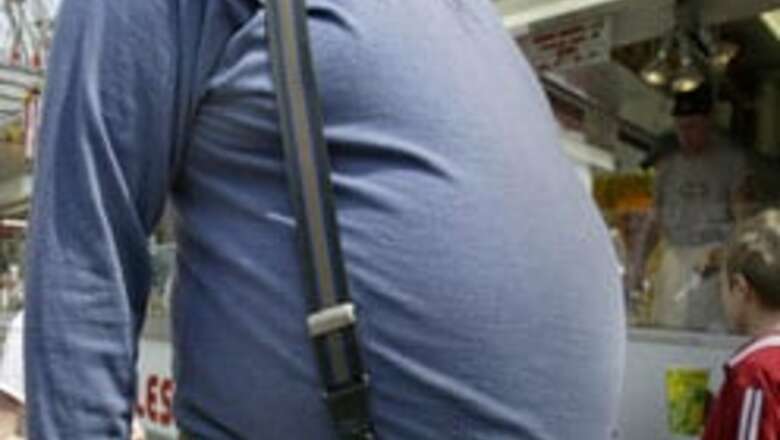
views
Washington: More and more obese people are unable to get full medical care because they are either too big to fit into scanners, or their fat is too dense for X-rays or sound waves to penetrate, radiologists reported on Tuesday.
With 64 per cent of the US population either overweight or obese, the problem is worsening, but it represents a business opportunity for equipment makers and hospitals, a radiologist at Massachusetts General Hospital, Dr Raul Uppot said.
“We noticed over the past couple of years that obesity was playing a role in our ability to see these images clearly,” Uppot said in a telephone interview.
Radiologists have their own term for it when writing up reports: "These images are limited due to body habitus," he added.
Uppot's team looked for this phrase in radiology reports from 1989 to 2003.
These included standard X-rays, computer assisted X-rays known as CT scans, magnetic resonance imaging (MRI) and positron emission tomography (PET).
These scans are used to look for tumors, blood clots, broken limbs and other injuries and diseased organs.
"Overall, 7,778 or 0.15 per cent of 5,253,014 reports were habitus limited," they wrote in the August issue of the journal, Radiology.
"It essentially doubled over the last 15 years," Uppot said.
The researchers looked more closely at the records of 200 of the patients, who weighed, on average, 108 kg.
"It is a major issue because the patient may still have a tumor, the patient may have appendicitis, the patient may have other inflammatory processes," Uppot said.
PAGE_BREAK
"This is affecting radiologists all over the country," he said, and added "Ultrasounds are most affected."
"In an obese person because the ultrasound beam does not get to the organs or get to them adequately enough we cannot get a picture. It looks like a snowstorm -- I don't know if you have seen those televisions where it is just whiteout? It looks like that," he said.
An MRI can get a good picture if the patient can fit into the tube or get onto the table, Uppot said. Some manufacturers have started to make MRI machines with larger bore holes, but with the cost in the millions of dollars per machine, only large groups or institutions can afford them.
Siemens Medical Solutions of Siemens AG has seen the market potential. "Increase Your Physician Referral Base with 1.5 Tesla MRI for Obese and Claustrophobic Patients" the company says on its website.
"It is a market out there. People who are taking advantage of it are making money," Uppot said. "We are in the process of buying and installing three of these machines," he added.
One problem is with gastric bypass surgery, where the patients are by definition obese, Uppot said.
"If there is some complication - abdominal pain or and infection or fever - they are invariably at higher risk of not being able to be imaged with a CT or MRI," Uppot said.
"For the surgeon, he doesn't want to take the patient back to surgery to explore to see what the problem is," he added.
"For the patient, not knowing what is going on is a big issue. If you tell a patient 'I am sorry - we just can't sit you on our CAT scanner', that is devastating to hear."
















Comments
0 comment